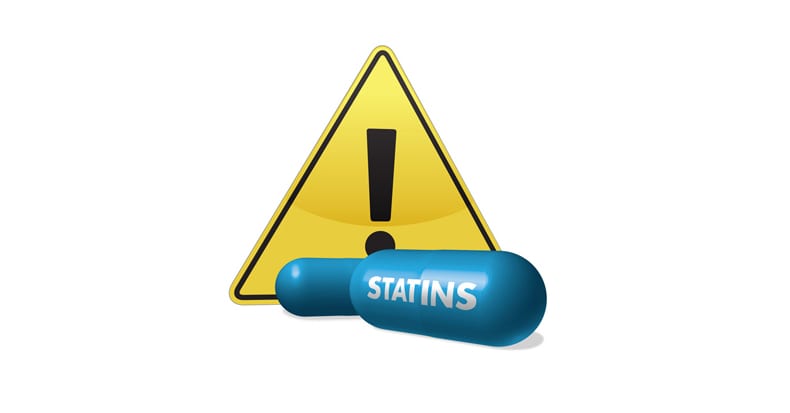Patients frequently obtain chiropractic services for aches and pains associated with their muscles and joints. In fact, some of the most common diagnoses chiropractors make are “sprains and strains” of the neck, back, and extremities. So, how does this fit in with the use of statin medications?
Statins are a group of medications frequently prescribed to lower cholesterol, particularly LDLs (low density lipoproteins)—the “bad” cholesterol. Not long after FDA approval was granted in 1987, patients taking the new statin medications began complaining of muscle pain, sometimes so severe that the pain remained permanent after they stopped taking the medication. A 2014 study offers NEW EVIDENCE that statins are linked to "skeletal adverse events," NOT just muscle aches and pains. Researchers found that statin users are up to two times more likely to receive a diagnosis of musculoskeletal disease (including degenerative joint disease or osteoarthritis) than non-statin users. This is of great concern especially in reference to the recent recommendation that statins should be prescribed to PREVENT cardiovascular disease in young healthy patients! This recommendation has the potential to significantly increase the number of people taking statin medications even though studies show NO significant benefits when statins are prescribed to members of a healthy population! With this anticipated increase in statin use, a 20-25% increase in patients presenting with musculoskeletal side effects such as muscle pain and/or bone/joint pain is likely. Since these complaints frequently drive patients to chiropractic physicians, it is VERY IMPORTANT that both patients and doctors are aware of these relatively common side effects.
Common symptoms/conditions associated with taking statins can vary considerably, making the association between the two difficult to determine in some cases. These include (but are not limited to) myopathy (muscle pain, weakness, cramps), liver damage, autoimmune muscle disease (rhabdomyolysis), tendinous diseases (like tennis elbow, shoulder, or knee tendonitis), cataracts, kidney failure, cognitive impairment, impotence, and diabetes mellitus.
Here are some interesting facts about cardiovascular disease (CVD): 1) CVD is one of the most misdiagnosed and mistreated conditions in medicine; 2) eating cholesterol and saturated fat does NOT increase the risk of heart disease; 3) it’s NOT the amount of total cholesterol or LDL in the blood that drives heart disease risk but rather, the number of LDL particles (LDL-P); 4) it is a myth that statin drugs save lives in healthy people without heart disease and in this group, the side effects associated with statins are far more potentially dangerous and quality of life altering.
There is evidence that statins benefit those with pre-existing heart disease to some extent. In a 2010 large meta-analyses regarding statin use in those with pre-existing heart disease who took statins for five years, Dr. David Newman noted the following: 1) 1.2% (1 in 83) had their life span extended (were saved from a fatal heart attack); 2) 2.6% (1 in 39) were helped by preventing a repeated heart attack; 3) 0.8% (1 in 125) were helped by preventing a stroke; but, 4) 96% saw NO benefit at all; 5) 0.6% (1 in 167) likely developed diabetes because of statin use; 6) 10% (1 in 10) experienced muscle damage related to their statin use. As noted in points one through three, there are some benefits, but at what risk? The study also reported that in men or women over age 80, regardless of their cardiovascular health, statins did not extend their life span. The objective of discussing this subject is to inform the reader that you have choices, and it's wise to discuss both the benefits and risks with your primary care physician prior to taking a statin.



